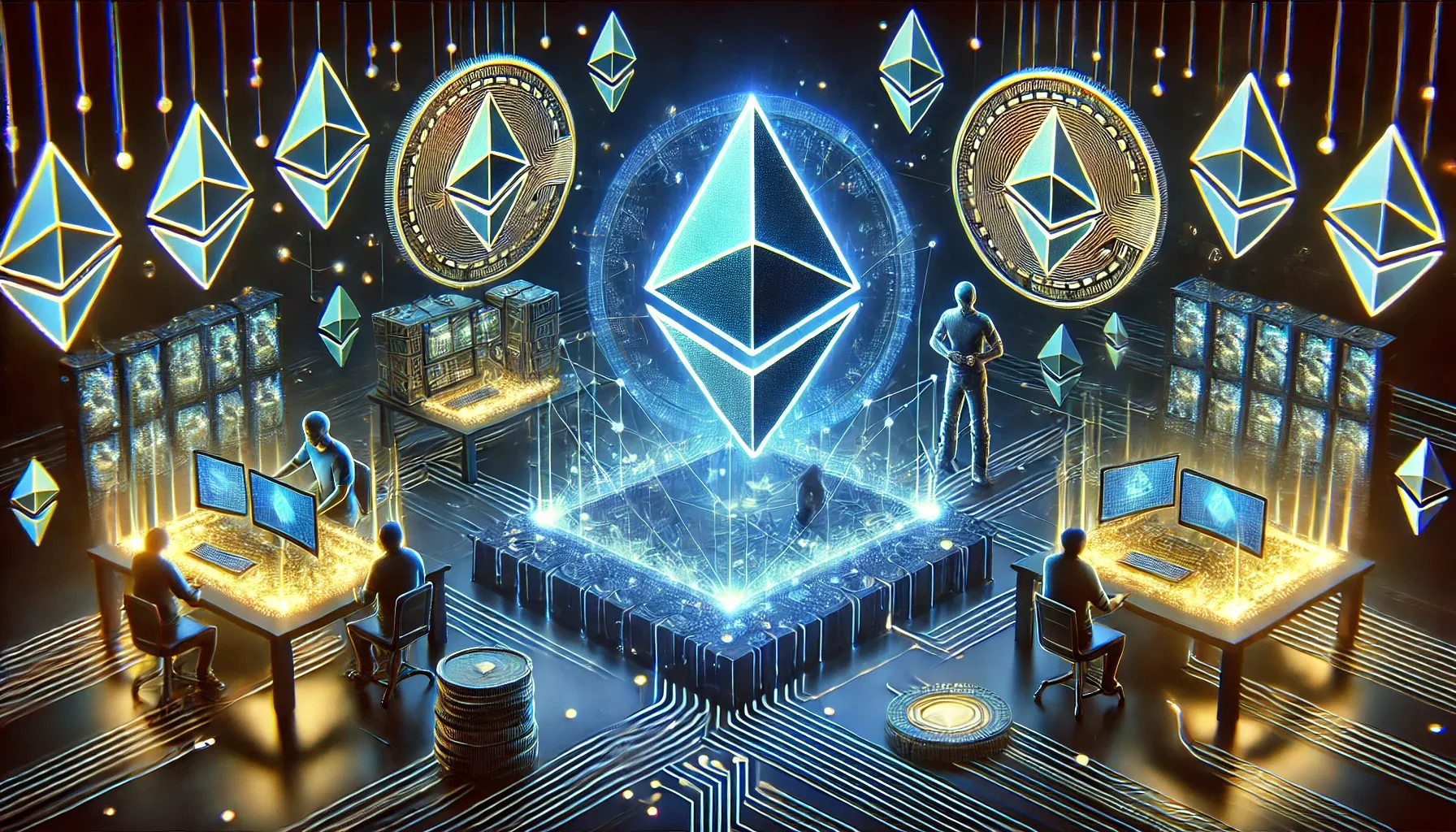Have you ever wondered how cryptocurrencies like Ethereum are created? Mining is the key process behind this. If you're thinking about starting your journey into ETH mining, you're in the right place. In this guide, I'll take you step-by-step through the process, from the basics to more advanced strategies. By the end, you'll have a clear understanding of how Ethereum mining works and how you can get started.
What is Ethereum?
Before diving into mining, it's important to understand what Ethereum is. Ethereum is a decentralized platform that allows developers to create and run applications (dApps) using smart contracts. These contracts are self-executing and work without the need for intermediaries. Unlike Bitcoin, which mainly focuses on transferring value, Ethereum is more versatile and can host a variety of applications.
Why Mine Ethereum?
Mining Ethereum not only allows you to earn ETH (Ethereum's cryptocurrency), but also helps secure and operate the network. As miners validate transactions, they keep the blockchain safe and decentralized. Moreover, with the rise of decentralized finance (DeFi) and non-fungible tokens (NFTs), the demand for Ethereum continues to grow.
Step 1: Understanding Mining
What is Cryptocurrency Mining?
Mining is the process of solving complex mathematical problems to validate transactions on the network. When a miner solves a problem, they are rewarded with cryptocurrency. In the case of Ethereum, mining is based on an algorithm called Ethash, which requires significant computational power.
Differences Between Mining and Staking
It's important to mention that Ethereum is transitioning from a proof-of-work (PoW) model to a proof-of-stake (PoS) model. This means that in the future, you may no longer need to mine ETH. Instead, you can "stake" your ETH to participate in transaction validation and earn rewards.
Step 2: Preparing Your Hardware
To start mining Ethereum, you'll need the right equipment.
Hardware Requirements
1. Graphics Card (GPU): A good GPU is essential. Look for models like the NVIDIA GeForce RTX 3060 or AMD Radeon RX 6700 XT.
2. Processor: You don't need a high-end processor, but ensure it's compatible with your GPU.
3. Motherboard: It should support multiple GPUs if you plan to scale in the future.
4. Power Supply: Make sure it has enough power for your setup.
5. Cooling System: Mining generates heat, so consider a good cooling system.
Software Requirements
Once you have the hardware, you'll need software to begin mining.
1. Operating System: You can use Windows or Linux, although Linux is more common among miners.
2. Mining Software: Programs like Ethminer or PhoenixMiner are popular for mining Ethereum.
Step 3: Choosing a Mining Pool
Mining alone can be challenging, especially when you're starting out. A mining pool is a group of miners who combine their processing power to increase the chances of solving a block.
Why Use a Mining Pool?
- Higher Chance of Earning Rewards: By joining a pool, you can receive rewards more consistently.
- Less Variability: Rewards are more predictable as they are distributed among all pool members.
How to Choose a Mining Pool
1. Reputation: Research the pool's reputation.
2. Fees: Check the fees the pool charges.
3. Location: Choose a pool with servers near your location to reduce latency.

Step 4: Setting Up Your Mining Software
Once you have the hardware and have chosen a pool, it's time to set up your software.
Steps for Setup
1. Install Mining Software: Download and install the software you chose.
2. Set Up Your Wallet: You'll need a wallet to receive your ETH. You can use a software or hardware wallet.
3. Configure the Mining Software: Enter your wallet address and pool information in the mining software.
Step 5: Start Mining
Now that everything is set up, it’s time to start mining!
How to Start Mining
1. Open your mining software.
2. Watch as it begins to work. You'll see your GPU starting to use resources to solve mathematical problems.
3. Monitor your hardware to ensure it doesn't overheat.
Step 6: Monitor and Optimize Your Mining
After starting to mine, it's crucial to monitor performance and optimize your setup.
Monitoring Tools
- Software Tools: Use programs like MSI Afterburner to monitor temperature and GPU usage.
- Pool Statistics: Regularly check the pool's statistics to ensure you're receiving your rewards.
Optimization Strategies
1. Overclocking: Increasing your GPU's speed can improve performance, but do so with caution.
2. Adjust Power Settings: Ensure your setup is energy-efficient.
Step 7: Withdraw Your Rewards
Once you've accumulated enough ETH, you can withdraw it to your wallet.
How to Withdraw
1. Check Your Balance: Review your balance in the pool.
2. Request Withdrawal: Follow the pool's instructions to request a withdrawal to your wallet.
Step 8: Stay Updated
Ethereum mining is constantly evolving, so it's important to stay informed.
Resources to Learn More
1. Forums: Join online communities like Reddit or specialized cryptocurrency forums.
2. News: Follow cryptocurrency news websites to keep up with the latest updates.

Conclusion
Mining Ethereum may seem challenging at first, but with the right information and careful approach, you can become a successful miner. Remember, the key is to continuously educate yourself and adapt to the changing market conditions. Good luck on your journey into the world of ETH mining!
